What Do Crows Eat? 15-Plus Foods They Love!
Crows are known to be one of the most intelligent and resourceful birds in the animal kingdom, and for many good reasons! These brilliant members of the Corvus genus know how to create and use primitive tools made from twigs and rocks, have complex means of communicating with one another, and can even remember where they store food over long periods of time.
There are about 45 different species of crows, ravens, and rooks within the Corvus genus. They exist on every continent except South America and Antarctica. They’re exceedingly clever birds, to be sure, and their unusually high intelligence means they’ve adapted to learn how to hunt and eat a wide variety of different foods.
Let’s take an in-depth look at what crows eat, their favorite meals, and the ways in which they find and hunt for food.
2,239 People Couldn’t Ace This Quiz
Think You Can?
15 Foods that Crows Like to Eat
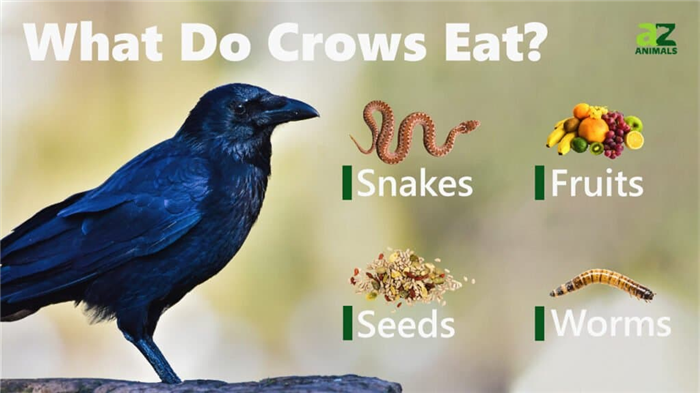
Crows eat foods ranging from worms to snakes, to seeds, fruits, and vegetable crops.
Crows are omnivores, meaning they eat a mixture of plants and animals that includes seeds, nuts, berries, rodents, snakes, eggs, and small fish. They’re extremely opportunistic and adaptable, which has certainly contributed to their rather long lifespans of around 20 to 30 years on average.
Most crows aren’t too picky and are more than happy to feed on a wide variety of different foods, such as:
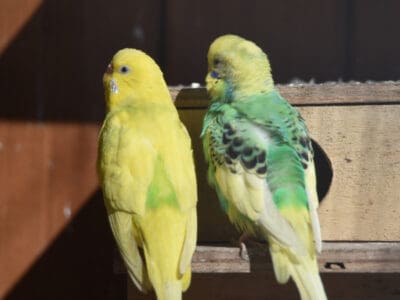
The Best Nest Boxes Birds Will Actually Use for 2022
- Various seeds and nuts
- Fruits, most commonly berries
- Grains
- Beetles
- Worms
- Garden vegetable crops
- Mice
- Moles
- Mollusks
- Food scavenged from dumpsters and areas where humans congregate
- Lizards
- Small snakes and salamanders
- Eggs
- Small fish
As you can see, crows have learned to make use of just about any food source they manage to come across, which means they are able to quickly adapt to and thrive in a range of rural, suburban, and urban areas.
What to Feed Crows: A Crow’s Favorite Food?
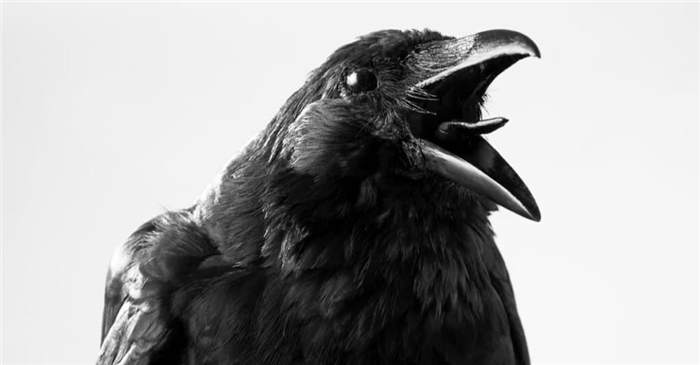
While crows will happily eat just about anything to survive, they do have a few foods they tend to enjoy more than others. If you’ve befriended a crow in your yard recently and want to offer them something they’ll love, consider one of their favorites:
- Nuts, namely peanuts, walnuts, and almonds
- Eggs (raw, boiled, scrambled…it doesn’t matter to a crow!)
- Meat scraps like chicken and fish
- Dry cat and dog kibble/pellet food (yes, really!)
How Do Crows Find Food?
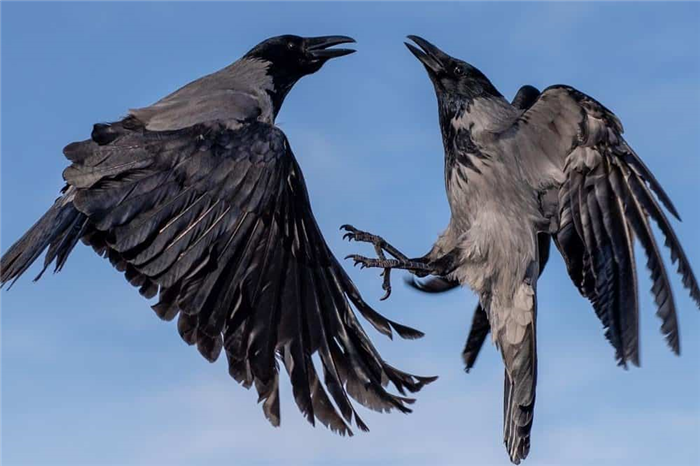
Highly intelligent and social, crows tend to hunt and forage in family groups. These family groups usually consist of a breeding pair and their offspring from the past two to three years! They stick together for long periods of time and often work together in surprisingly complex ways to find and capture their various sources of food.
Amazingly, some crows have even learned how to use rudimentary tools to make catching prey and foraging even easier for them! A 2005 study showed how New Caledonian crows commonly use items like modified twigs, rocks, and other items to retrieve and tear into their food. Even juvenile birds were clever enough to quickly pick up on how to use these primitive tools!
This is a pretty incredible discovery, considering very few animals are intelligent enough to understand how to use objects in this way. It’s just another reason why crows are some of the brightest birds around!
Share this post on:
Hailey Pruett
Hailey Pruett is a freelance content writer, editor, and lifelong animal lover living in Tennessee with their spoiled cat, grumpy leopard gecko, and loving partner. Their favorite animals are lizards, turtles, snakes, and frogs. When they aren’t obsessively writing about how awesome reptiles and amphibians are, Hailey is usually playing relaxing life simulator video games and obscure, old-school RPGs. They are non-binary and comfortable with any pronouns.
What Do Crows Eat?
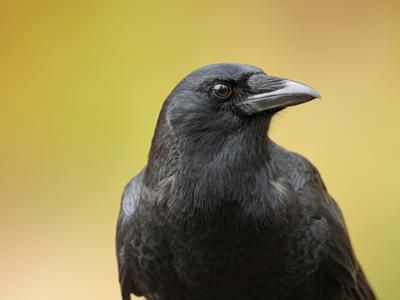
There are some 45 species of crows in the Corvus genus which includes rooks, ravens and crows. With broad, stout and powerful beaks, crows are certainly not known to be picky eaters, so what do crows eat?
All species of crows are flexible, opportunistic feeders that will consume just about anything ranging from insects, invertebrates and meat from animals or carrion, as well as all types of nuts, seeds, vegetables and other plant matter.
With their large, thick bills, crows will tuck into just about any meal available to them. This includes other birds, including baby birds and bird eggs. Many crows are excellent hunters too, but they generally prefer to feed opportunistically.
Read on to discover more about the feeding habits of these intelligent and curious birds!
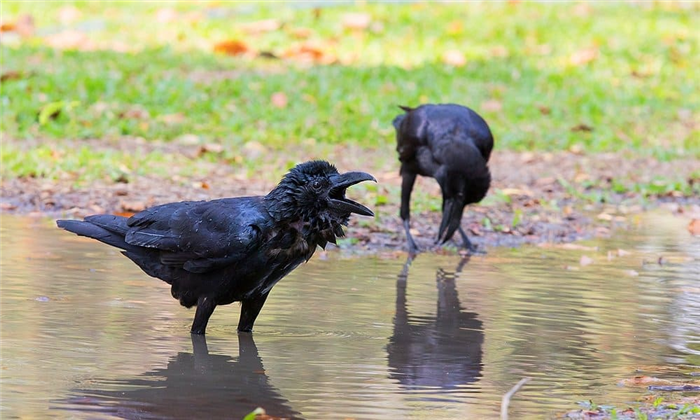
A crow foraging on the grass
What do crows eat in the wild?
Given that there are some 45 species of crows (also including rooks and ravens), this does vary hugely between region to region and species to species. Broadly speaking, however, crows are exceptionally versatile and flexible feeders.
For example, the Carrion Crow, a very common species of crow, consumes carrion as well as many types of insects, worms, small mammals and plant matter. Some crows, such as Hooded crows, also have a liking for fish and shellfish and are observed dropping crabs and shellfish from a height to crack their shells.
In general, crows consume at least the following foods:
Small animals and birds; lizards, amphibians, rodents, etc, both alive and as carrion
Seeds, nuts and legumes
Vegetables, flowers, bulbs and other plant matter
Insects, earthworms and other invertebrates
Fish, shellfish and molluscs
Human scraps and leftovers
Crows are certainly not bad at hunting either. The Large-Billed crow is an expert hunter of lizards whereas American crows and New Caledonian crows have been observed using tools to pry grubs from logs. This is indicative of the high intelligence of birds from the Corvid family.
A Carrion Crow eating seeds off the ground
What do crows eat in the winter?
The main change to a crow’s diet during winter is a shift from insects to plant matter. Insects become more scarce in the winter, though crows do spend some time digging them up from the grass or dirt.
Their diet will shift to accommodate more grains, nuts, fruits and vegetables. Scavenging human leftovers will also become increasingly important and many crows will frequent bird feeders and bird tables in the winter too.
What do baby crows eat?
Baby crows need extremely soft foods in their first two or so weeks. The parents will firstly regurgitate food into the chicks’ mouths, which is a very common practice amongst omnivorous birds. After a week or so, the chicks will also be fed soft grubs, maggots and partially digested food.
Crow parents feeding newly hatched baby crows in the nest
Are crows omnivores?
All species of crows are omnivores, though some lean towards being more herbivorous and others lean towards being more carnivorous.
For example, The Fish crow is one such crow that prefers a more meaty diet, feeding upon living and stranded or dead fish, crustaceans and shellfish. The Australian Raven is also largely carnivorous. The Cuban crow, conversely, feeds almost solely on fruits and nuts.
Overall, crows are flexible, adaptable omnivores and tend to eat whatever they need to to survive.
What should you not feed crows?
Crows shouldn’t be overfed on bread or processed foods. Like other birds, crows should also not consume mouldy food. Foods high in salt and sugar are also not ideal for crows or other birds. Bread should be kept to a minimum when feeding birds – opt for grains, seeds and vegetable or plant foods instead.
A Hooded Crow with bread – Crows will happily take bread, however, it should be kept to a minimum and opting for grains or seeds is much better for them
Do crows like peanuts?
Unsalted, unflavoured peanuts are a firm favourite of crows. In fact, some recommend giving crows peanuts to provoke them to give gifts in return.
Crows have been widely observed to bring humans ‘gifts’ – usually pieces of shiny material, plastic, glass and stones – in receipt of food. This young girl from Seattle has amassed a vast collection of crow gifts in return for peanuts and other energy-rich foods.
Do crows eat squirrels?
Many crows could feasibly hunt squirrels, especially younger squirrels or those that are injured, unwell or already dead. Hunting a live, fully grown adult squirrel would probably be quite difficult for most crows.
American Crow siblings fighting over food
Do crows eat other birds?
It is common for crows to eat other birds. Crows are well-known for killing other birds, particularly nestlings and fledglings. Magpies (from the same family as crows and closely related) have quite a reputation for preying on baby birds.
Crows are also known to mob other birds, including baby birds. Whilst this seems brutal and merciless, it is relatively common amongst birdlife and much other wildlife.
Do crows eat other baby birds?
Crows and other Corvids are well-known to eat baby birds, both as fledglings and nestlings. If crows locate an unattended bird’s nest, they are certainly prone to eating the baby birds and eggs. This does vary between species of crows, however.
Whilst crows consume other baby birds opportunistically; they likely won’t actively seek them out. Crows will rarely lack food, and there are usually easier meals available.
A flock of Hooded Crows foraging for food together
Do crows eat mice?
Crows regularly eat mice and many other small rodents and mammals. Whilst crows are capable hunters, they’re not so specialised in hunting fast-moving prey such as mice. They will still feed on them opportunistically, however.
It’d be very difficult for most crows to hunt an adult rabbit, and they are not specialised to catch fast-moving prey. Crows have been observed to gang up on larger birds and animals (known as mobbing), in which case killing a rabbit is possible. It’s much more likely that crows would eat either sick or injured rabbits, or dead rabbits as carrion.
Do crows eat corn?
Corn has a solid nutritional profile for birds and crows will certainly eat it if it’s present in their territories.
Eurasian Jay feeding on corn
Is it illegal to feed crows?
It’s not illegal to feed crows, but it is illegal to poison them in the UK and US at least. There have been rare cases of fines being issued for bird feeding in the UK, either when it causes a public nuisance or is otherwise antisocial.
One woman in Glamorgan was fined £3,000 after a court found her guilty for breaching a community protection notice that restricted her excessive feeding of birds.
What do crows eat in the US?
All species of crows in the US are omnivorous. The American crow is known for its particularly flexible diet, which mainly includes carrion, insects, invertebrates, seeds, fruits – pretty much anything they can get, due to their scavenging nature.
The Australian Raven is one of the more carnivorous species of crows, feeding largely upon small rodents and mammals, lizards, shellfish, insects and invertebrates.
What to do about crows
Share
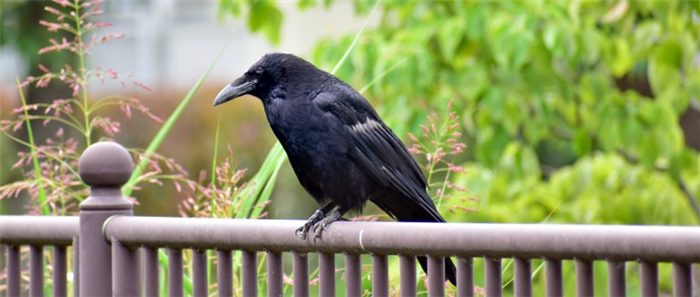
Crows may be intelligent because, like us and other smart species, they are very social. The groups of crows in your backyard are extended families who share food and look out for each other. Some young crows help their parents care for younger siblings before breeding themselves. Crows work together to mob a threatening predator or another crow attempting to move in on the group’s territory.
A crow family can eat 40,000 grubs, caterpillars, armyworms and other insects in one nesting season. That’s a lot of insects many gardeners and farmers consider pests. These good environmental citizens also transport and store seeds, thus contributing to forest renewal. And their habit of eating carrion makes them part of nature’s cleanup crew.
What attracts crows to urban areas?
American crows use almost any combination of woodland, farmland, orchard or suburban neighborhood. Like other common urban wild neighbors, they thrive in the habitat we create. Crows increased and spread when Europeans colonized North America. As agriculture and urbanization spread, so did crows.
Crows’ sociability can be hard on human neighbors where large winter roosts form in cities and towns. Crows from colder places migrate to join crows who live near the roost year-round. Communal roosts offer protection. But the noise and mess of a large winter roost in town make for hard feelings among human neighbors. Fortunately, these conflicts can be resolved humanely.
Common conflicts and solutions
For all conflicts with crows, making the area where they are unwelcome less attractive to them will help. Trash, food waste in open compost, pet food and food put out for other wild species are all attractive to crows. Especially important: Keep crows out of food sources.
- Secure trash.
- Cover compost or only compost yard waste; leaving out food scraps.
- Feed pets indoors or monitor them if fed outdoors and promptly remove food when they finish eating.
- Feed small songbirds with feeders that exclude large birds and clean up spillage under feeders promptly and regularly.
Crows are omnivores (eats both plant and animal foods) and will sometimes come to eat one food, such as insects, but then stay around or return to eat another, such as garden produce. You won’t be able to remove all potential crow food sources, but if you remove the easy meal, the crows may decide to look elsewhere.
Because crows are so smart, you’ll need to use a variety of techniques simultaneously and start the control program before birds become accustomed to feeding or roosting where you do not want them. Convincing them to leave once they are settled in is more difficult.
Crows in trash
Keeping crows out of trash is easy: Consistently use intact and secure trash containers with tight-fitting lids. Trash bags or overfilled bins will invariably attract crows, who easily open the bags to retrieve what they want.
Crows visit trash by day; trash that is scattered overnight is the work of others—dogs or, perhaps, raccoons—but may be unjustly blamed on the crows who the homeowner sees in the morning eating the leftovers after the real culprits are gone. No matter who gets in the trash, simply putting lids on is enough to keep out crows.
Large winter roosts—the conflicts
Crows began abandoning rural roosts for towns and cities in the 1960s. Now many crows commute to the country, visiting cornfields and pastures to forage by day before returning in late afternoon to urban roosts.
Some crow roosts formed at the edge of urban areas for years and has been simply engulfed by spreading development. But that’s not the case for all roosts. Some towns have been adopted by large crow roosts, even some old downtown areas.
Why have crows made this shift? Mainly because we create excellent crow habitat with ample food nearby. Other factors that may contribute:
- Crows aren’t shot in urban areas.
- Groups of tall trees are more common than in farmland.
- Our buildings and paving make cities warmer than rural areas.
- Artificial lighting may make crows feel safer from owls, their main nocturnal predator.
The same roost locations have been used for decades or longer. One in New York has been used for over 125 years. Roosts can host from a few hundred birds to hundreds of thousands.
Crows form large roosts in late fall and stay until early spring when they return to their breeding territories. These winter roosts can be especially large in places where northern migrants augment local crow populations. Northern locations in the United States and Canada may have large roosts only in the summer and fall because these birds migrate south for the winter. There are some year-round roosts in California.
People complain about the mess and noise around urban roosts. Droppings on walkways and vehicles are an aggravation. The crows’ loud cawing and calling at roosts tend to be noisiest right before dawn—even on weekends.
Large crow roosts—the solutions
Humane harassment can move crows who roost in undesirable locations. The jury is still out on when this works best, but we feel it is when roosts are just beginning to form for the season, before crows are well settled in. Roosts are also easier to relocate when they are just being established at a new location—before the crows have spent many seasons using the same spot. So, start as soon as it’s clear there’s going to be a conflict.
Successful programs combine techniques. Used together, each of these techniques reinforce the others to convince crows the roost location is unsafe:
- Recorded crow distress calls.
- Pyrotechnics (loud noisemakers that sound like fireworks).
- Lasers designed to harass birds.
- Hanging effigies (fake models) of dead crows (never the real thing)—a few fake Halloween décor crows prove surprisingly effective.
One community moved a neighborhood roost by just having people out on the sidewalks with noisemakers at dusk for the better part of a week. Apparently, the crows did not like the party-going human neighbors every night.
Reducing outdoor lighting may make the area less attractive to crows. Turn off outdoor lights, use lights aimed towards the ground, or use a motion-trigger that only turns on lights when someone enters the area. While recognizing the value of mature trees, selective thinning and pruning trees can reduce crow use.
Pushed from their roost, crows generally move to the nearest similar site. There will still be crows in the community, just not in the objectionable roost location. Allow the crows a roost site with a stand of tall trees in the same general area as the site where they are unwelcome and do not harass them there so they will leave a problem site more readily.
Crows in gardens
Crows are sometimes blamed for garden damage caused by other animals. Crows hanging around to eat insects and grubs may or may not also help themselves to fruits and vegetables. On balance, the benefits from crows eating insects, grubs and waste grain may outweigh a little damage.
You can ban crows from small gardens.
- Drape bird netting over the plants or suspend it from a framework built around the plants.
- Protect seedlings with fabric row covers.
- Protect ripening corn by placing a paper cup or bag over each ear after the silk has turned brown.
- Set Mylar® streamers strategically throughout the garden.
- Stretch cord, fishing line, or fine wire above gardens in a grid or parallel lines—at least a little higher than the gardener’s hat for safety. The stakes supporting tomatoes can support the wire. Reflective tape or other highly visible material will help both birds and gardeners see and avoid the lines.
As long as crows have enjoyed our tasty crops and produce, we have been trying to frighten them away. What have we learned?
- Birds can’t hear ultrasonic sounds. Devices supposed to scare birds away with ultrasonic sounds don’t work.
- Birds are not fooled by plastic owls and inflatable snakes for long.
- Effigies (fake models) that move realistically may work for a little while.
- Crows avoid effigies of dead crows (never the real thing). Halloween décor crows, hung upside down with the wings spread, usually work.
- Highly reflective Mylar® tape or bird tape, hung in streamers or twisted and strung to make a temporary fence can frighten crows away.
- Devices with reflective surfaces that spin or flap in the breeze can frighten crows. Buy them or make yourself—string up aluminum pie tins or discarded CDs around vulnerable plants or tie helium-filled Mylar party balloons around your garden.
- Playing recorded crow distress calls disperses crows.
- Farmers use gas-powered exploders and pyrotechnics. But these are too noisy unless your garden is far from neighbors. They may also be restricted or forbidden by local authorities.
- A garden hose with a motion sensor becomes an oscillating sprinkler triggered by an animal’s arrival. The surprise of a sudden spray will frighten crows initially—until they learn there is no real harm.
- All frightening devices work better when used consistently, moved around so crows don’t get used to them and combined with other devices.
Competition with other backyard birds
Food put out to attract songbirds will also be attractive to crows. Backyard birdfeeders who want to attract only smaller birds can simply use feeders that exclude larger birds.
West Nile virus: Crows became associated with West Nile virus when health authorities used them as an “indicator” species. Crows and their relatives are especially sensitive to this disease. Once infected, very few crows survive. So, authorities asked the public to report dead crows so they would know when West Nile appeared in a new area. West Nile virus is now found throughout the lower 48 states and Puerto Rico.
Unfortunately, many people got the mistaken impression that crows give people West Nile, which is not the case. Mosquitoes spread West Nile virus. Health authorities recommend controlling mosquito populations and avoiding mosquito bites to prevent West Nile virus.
Histoplasmosis: Dropping accumulation under roosts can encourage histoplasmosis fungus to grow in the soil. When disturbed, spores can become airborne and people can breathe them in. Most people have no apparent ill effects. A few develop respiratory disease and a very few develop disease of other organs.
Histoplasmosis fungus is common in the eastern and central US. As many as 80 percent of people tested in these areas prove to have already been exposed without knowing.
People diagnosed with this disease typically work where bird or bat droppings have accumulated over a period of years (poultry farmers, contractors clearing old buildings) or explore caves where bats lived. Despite the very small risk of harm to people, histoplasmosis has been used to justify killing crows where the nuisance of large roosts annoys people.
Why poison is not the answer
A few communities looking for a quick fix to crow roost nuisance killed crows with slow-acting poison DRC-1339. Killing crows doesn’t cause the survivors to leave town. It merely allows more of the next season’s young to survive due to less competition for resources. Changes in crow numbers are very short term.
DRC-1339 kills by damaging the kidney and heart. Poisoned birds die slowly over about one to three days. It is inhumane to the crows, who are killed merely for being inconvenient. And the poison may sicken or kill other animals (called non-target animals). Crows hide food for later. Any animal can find and eat these caches, not just crows.
Lancaster, Pennsylvania, was one such community that reached for a quick fix. Local people and bird lovers nationally voiced their strong objections to poisoning crows. Penn State researchers looked at what happened after the poisoning and found that it did not work.
Local officials abandoned plans to poison again the next year and worked with local crow lovers to start a humane harassment program instead. Volunteers from the ranks of local people who condemned the poisoning assist with the seasonal harassment work.
In its first season, the program successfully moved the large downtown roost from its prior problematic site. The crows shifted to a more industrial area; a less problematic site. By the end of its second season, the program moved crows out of most of the city to roosts outside Lancaster.
What Do Crows Eat – #1 Top Secret Revealed!
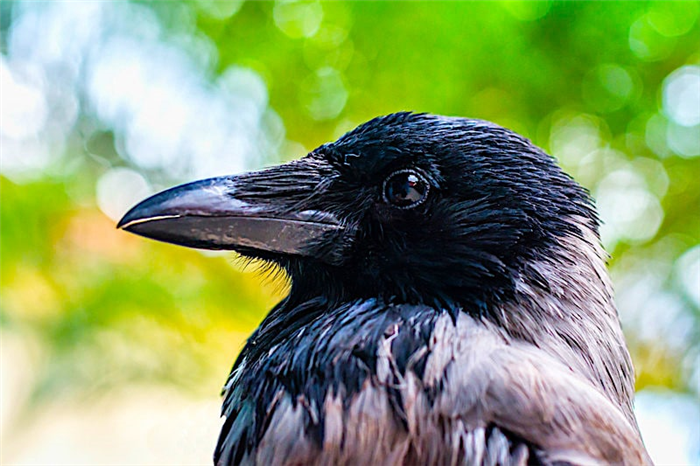
Have you ever heard about a bird holding a grudge, crafting its own tools, or remembering a human’s face? The crow is argued to be one of the most intelligent birds to exist.
According to the University of Washington, crows can recognize and remember your face for years.
But do their smarts help them find food? How are they able to use this gift of knowledge to thrive in a world that is heavily populated with humans? If you’re curious about these quick-witted animals and what they eat, then read on.
Table of Contents
What do crows eat?
Crows are omnivores and will eat just about anything that they can find such as animal-based meal items including amphibians, reptiles, insects, eggs, and invertebrates such as worms. As for plants, they consume seeds, fruit, nuts, and grains. making them opportunistic feeders. They eat both, plant matter and meat belonging to other animals.
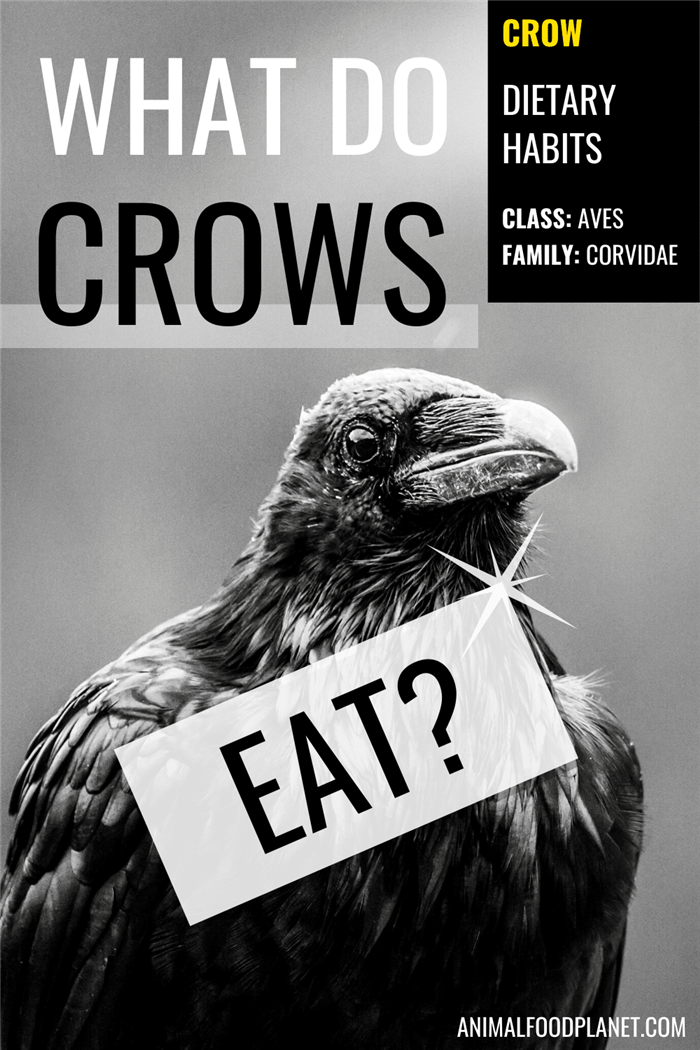
What Do Crows Eat?
The family to which these birds belong is one of the most studied among bird-watchers or ornithologists.
CROW TAXONOMY
Crows can be found in the family Corvidae. You may have heard about “corvids”, a nickname given to this family. This grouping includes over 120 species. These individuals share a medium body size, bulky bills, large feet, and a distribution that extends nearly all over the world. Crows specifically are found in the genus Corvus along with ravens, rooks, and jackdaws. Crows are known for their rich black feathers, heavy dark bills, and large legs meant for perching and holding items.
The crow is a highly adaptable bird that thrives in a myriad of different habitats. Depending on their surroundings, they make the most out of available meals.
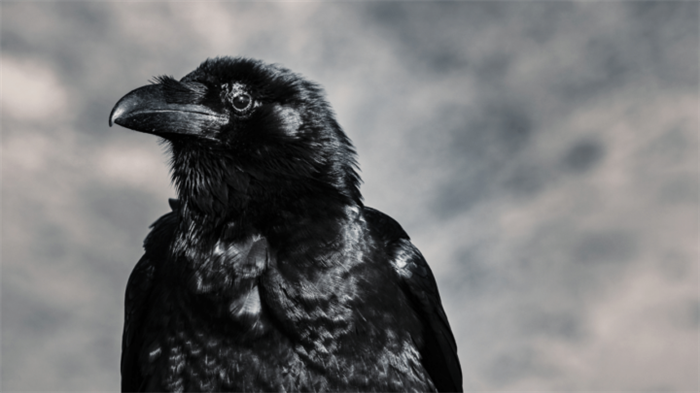
What do crows eat They are omnivores
WHAT DO CROWS EAT IN THE WILD
Being found in every pocket of the Earth aside from Antarctica makes for a lot of possible decisions in terms of finding a meal. To fully understand what a crow will consume, it’s best to look at a few species in particular.
American Crow
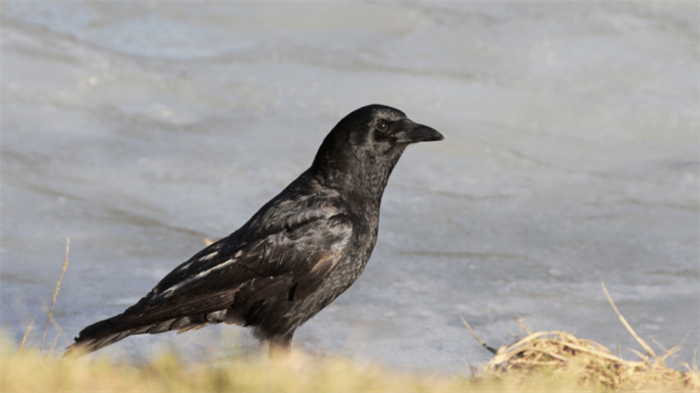
The American crow (Corvus brachyrhynchos) is a fairly large bird, weighing in around 316 to 620 grams with a wingspan of 85 to 100 centimeters. True to the common look of a crow, they have a black body, bill, and legs. They tend to inhabit fields, woodlands, forests, and suburban areas. The American crow is found nearly all over North America.
As for what they eat, these individuals eat insects such as beetles, grasshoppers, spiders, and millipedes. They also consume a number of reptiles, amphibians, and other birds, including stolen eggs. Small mammals including mice and voles have been a targeted item. The American crow will also prey on plant-based items like peas, grapes, cherries, apples, and corn.
Hooded Crow
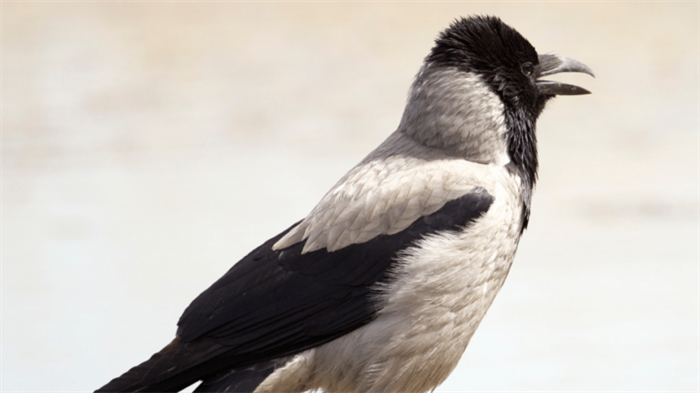
Not all crows sport a solely black appearance. The Hooded crow (Corvus cornix) has a purely black head and legs with grey patches along the shoulders and underbelly.
It typically is about the same size as the American crow at about 370 to 650 grams with a wingspan of about 100 centimeters.
These birds are found in open woodlands, farmlands, and moorlands of northern and eastern European countries. In fact, it is called the “mist crow” in Germany.
The Hooded crow has adapted to finding food that is more aquatic. They take advantage of the nearby cliffs and ocean, using the rocks to crack open the outer skeletons of mollusks and crabs.
This is achieved by dropping them at a thoroughly calculated height. They will also steal puffin eggs when given the chance.
In addition to these preferred meals, the Hooded crow will consume carrion, insects, grain, fruit, amphibians, and mammals. All in all, they are quite skilled scavengers.
Torresian Crow
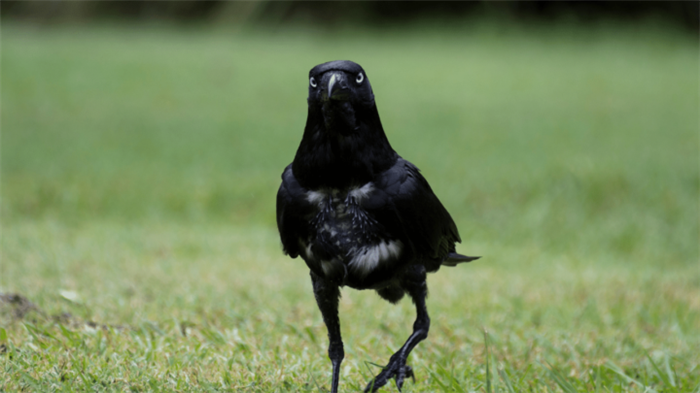
Australia is known for its harsh seasonal changes, making foraging a challenging place to find food. So then what do crows eat in Australia?
The Torresian crow (Corvus orru) is the perfect example of a bird thriving on this continent.
Approximately the same size as the two previously mentioned species, these individuals range in size from 48 to 53 centimeters.
They’re known for their glossy black plumage with a duller coloring on the chest. It prefers to live near the beaches, forests, woodlands, and farmlands of northern and western Australia.
The main source of food for the Torresian crow is actually grains. This is because of the various croplands that it tends to forage in.
They also can be found preying off of fruits, insects, invertebrates, and abandoned garbage. These birds also make the most of suburban areas, feeding off of carrion along the various roads.
WHAT DO CROWS EAT IN THE GARDEN?
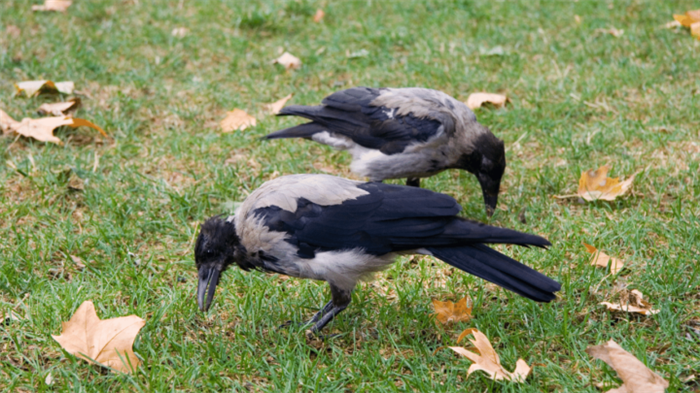
What do crows eat in the garden
There has been quite a bit of debate about crows causing a nuisance to people’s gardens.
This is where the word “scarecrow” got its origin. It’s true that these animals will forage for insects and grubs, but that’s not entirely bad.
Insects have been known to damage plants, making the digging that a crow does somewhat beneficial.
In addition to worms and insects, crows have also been known to feed off of fruits and vegetables found in the garden. This is less desirable from a gardener’s point of view.
WHAT DO CROWS EAT IN THE GRASS?
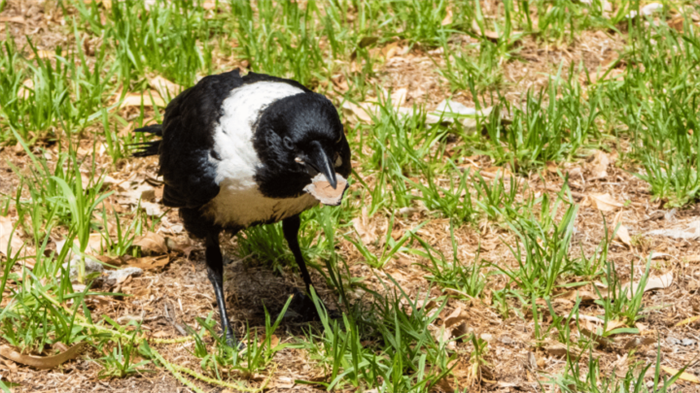
What do crows eat in the grass
Another spot where you might see a group of crows is in your backyard or on the grass at a nearby park. You may spot a crow using its strong bill to take chunks out of the grass and throw them aside.
This is them foraging for beetles and other insects.
Again, this may actually be a good thing. The grubs found underground will attack the roots belonging to various grass species. Without the grubs feeding off of these foundational structures, lawns and parks can continue to grow.
WHAT DO CROWS EAT IN THE WINTER?
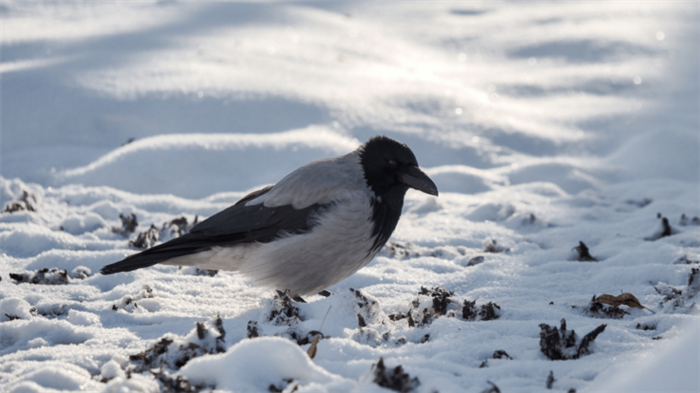
What do crows eat in winter
It’s no surprise that some animals choose to hibernate when winter comes around. But what happens to crows in these harsh seasons?
Some of them go into a state known as “torpor” where their bodies become inactive, yet this usually lasts less than a full day.
Crows can find enough food to survive the winter without shutting their bodies down. Finding foods with higher energy like seeds and insects are achieved through a little digging.
They will also take advantage of animals that were unable to survive the cold temperatures in the shape of carrion.
WHAT DO CROWS DRINK?
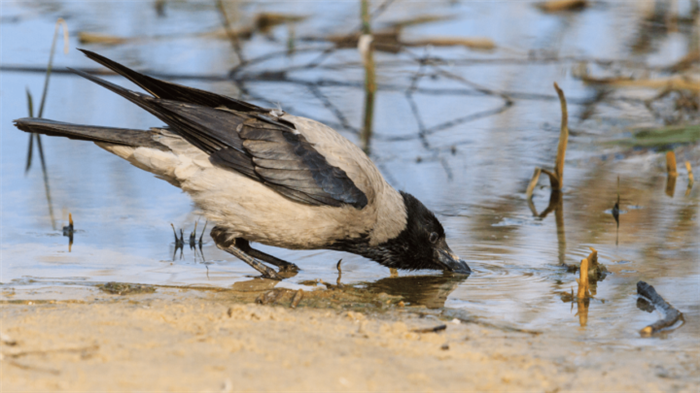
Just like many other types of animals, crows get a lot of their daily water requirements through the foods that they eat.
This does not mean, however, that they will refuse to drink out of the birdbath when given the opportunity.
It is even fairly common to see a crow drinking in shallow water.
Another reason why crows don’t need to drink much is due to the fact that they don’t sweat in the same way that mammals do.
Birds don’t have sweat glands, which is one of the main ways an animal loses water.
CROW DIGESTION
Just like any other bird, crows do not have teeth. Instead, they are given a modified digestive system to successfully gain nutrients from their prey.
If the food item is too big, the crow will use its strong bill to break apart pieces. For meals that are small enough, they go straight down the hatchet.
Once down the throat, the food will be temporarily stored into the crop until it is ready to move along to the first part of the stomach, the proventriculus.
This is where stomach acids will begin to break down the particles. Then the second part of the stomach, also known as the gizzard, will grind the item into small enough pieces to pass along to the intestines before exiting the body.
WHAT DO BABY CROWS EAT?
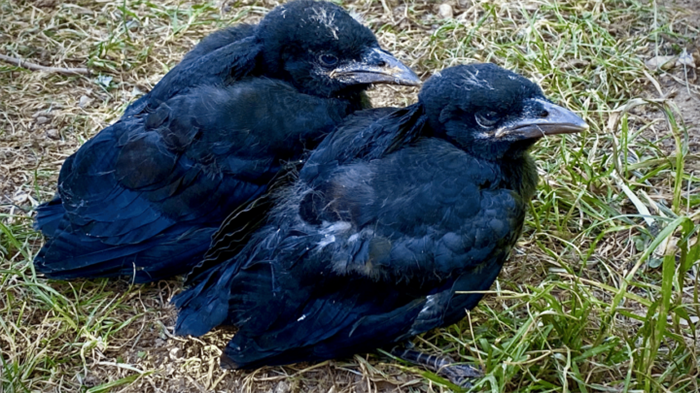
What do baby crows eat
Once born, a baby crow, or chick, only has about four weeks until it is ready to leave the nest.
This can only happen with the right nutrition. In the first few weeks, an adult crow will give their young partially digested food.
As the chicks become stronger, they are fed torn pieces of small mammals and insects. Surprisingly, once a crow leaves the nest, it will continue to live with its parents, creating a flock, or murder.
WHAT DO CROWS IN CAPTIVITY EAT?
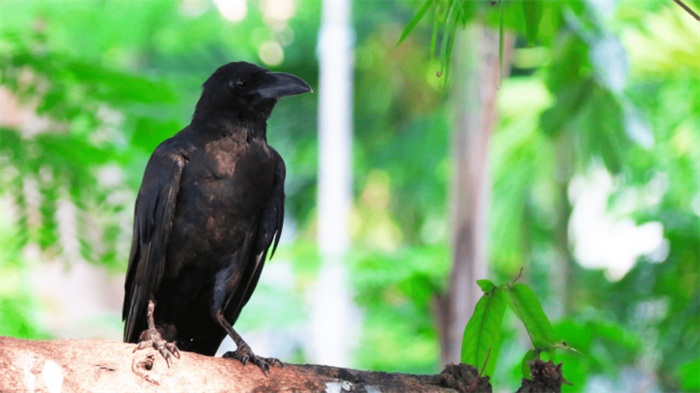
What crows in captivity eat
You might have gone to your local zoo and noticed a crow in one of the aviaries.
For the most part, crows aren’t found in captivity unless they cannot be released back into the wild after an injury.
In these circumstances, it is important for them to get the right nutrition.
For birds kept in captivity, they are generally fed meals that resemble what they would get in the wild.
This generally includes various bugs, fruits, and small rodents.
Now that you know what they eat in the wild, you can see how expansive their diets are.
It is important to give them this amount of diversity when held behind an enclosure. This keeps them both entertained and properly fed.
What is the difference between a Crow and a Raven?
One of the hardest things to tell apart for many people is the difference between these two blackbirds. They both belong to the same family and genus, making it all that more tricky. The biggest differences can be found in their size, tail shape, and sounds.
Crows are known to be the smaller of the two by sometimes half their body weight. The tail of a crow is more uniform than a raven’s.
When in flight, raven tails look more wedge-shaped, or diamond-like, while crows are uniform across the bottom. If you’ve ever heard a bird sound of a “caw” sound, then it was most likely a crow.
Ravens, on the other hand, resemble more of a lower croaking sound. Another separation is that crows tend to fly in larger groups called a “murder” whereas ravens are more likely to travel with a mate.
What can I feed wild crows?
Some people like to attract crows, using food as an incentive. If you want to feed a wild crow, it is important to simply leave food outside instead of trying to feed it from the palm of your hand.
Although they don’t have teeth, those beaks are powerful. If you do want to go about leaving food outside for a crow, you don’t have to look hard.
Crows are opportunistic scavengers, meaning that they will eat a wide variety of items. Peanuts, pet food, and fruit have all been used to befriend crows.
Do crows make good pets?
In most places, it is illegal to own a crow as a pet. They are considered wild animals. And although they might seem like an entertaining birds to own, this is not in their best interest.
Because of how smart they are, keeping a crow in captivity would be extremely boring. This can lead to a variety of issues such as the crow becoming destructive or dangerous.
What eats crows?
There are a number of predators that crows have to look out for. Hawks and owls comprise the most common threats in their natural environment. During daylight hours, hawks have been known to kill adult and juvenile crows.
When it gets dark, crows need to take refuge through perching. This is when owls can attack them. Humans can also be considered a predator.
Although crows are protected under the Migratory Bird Treaty Act, a number of people still shoot these birds out of fear and sport. If you do not want crows in your garden, there are humane options that will deter these animals.
How smart are crows?
Scientists have been able to determine that crows are among the smartest birds currently known to exist. But how smart are they? The answer: as smart as a seven-year-old child.
A series of completed tests have proved that these birds are indeed brainy. To put it into context, let’s imagine a situation. Let’s say that someone tormented an individual crow.
This bird would not only remember the act but also proceed to tell other corvids about the perpetrator for future reference. These listeners then can pass on the same information until a new generation of crows can recognize that same individual and attack them for their previous wrongdoings.
Not many animals are able to do this. Other examples of their intelligence are tool crafting, problem-solving, and stashing food away in a secret location only if they aren’t being watched.
The term “bird brain” is a strongly believed misconception. Crows are intelligent animals that are capable of a series of complex behaviors.
As opportunistic scavengers, these birds can eat anything that they come across.
This includes insects, amphibians, reptiles, invertebrates, seeds, grains, fruits, eggs, and carrion.
The next time you see this medium-sized glossy blackbird, remember that it’s skilled at adapting.
Can I keep a crow as a pet?
Although astoundingly smart and high on the list of bird brainiacs, do crows make good pets? The short answer is no, but perhaps a more important question is, can you have a crow as a pet? In the US, crows are listed on the Department of the Interior’s Federal Register of Migratory Birds and therefore are protected by the Migratory Bird Treaty Act (8).
This makes them illegal to possess, or any part of them, but for many reasons, crows do not make good pets. And justifiably right – they require specialized custom care as well as constant entertainment and interaction. Researchers and rehabilitators often compare them to small children who require constant attention.
The question of can crows be pets is easily answered by both practical and moral reasons that prohibit their ownership. Even in extenuating circumstances like injury or harm, you should never take in a crow, and it is always illegal to keep a native crow (in the US at least). Besides the neverending work it would take to care for, maintain, and nurture a crow, crows belong in their natural habitat, and however happy you may be, your crow would not be living its best life.
About The Author
Garth C. Clifford
Thanks for visiting and reading! My name is Garth, and I would like to welcome you to my personal birding space. Whether you want to attract songbirds to your backyard, enjoy birding hotspots, learn bird symbolism, or start bird photography, you are in the right place.
61 thoughts on “How to Befriend Crows? (Step-By-Step Guide)”
I agree with all of what you said. Nature is
Some time it’s cruel but that is the way nature is. I have a crow I call Mr. I am afraid I have spoiled him
I live in Saint Paul, in a quiet residential neighborhood, I’ve been leaving small dog food and unsalted peanuts out in my back yard for about two weeks at around 10am next to my large bird bath. I’ve had two or three crows come check me out as I’m sitting on my back steps just watching them and they me, this morning there where about 20 crows, one came down from the tree and inspected the food I had left out, then checked out the bird bath, next thing I know “CAW CAW CAW!!” And all of them descend on my yard, eating the food and using the bath. I lived in the middle of nowhere for most of my life and only recently moved into the cities (and I regret this very much).
Where I used to live, I had a murder that would hang out near the pond on my property, I’d leave out chunks of chicken, beef, and grapes near the pond, every so often a few of them would be on my porch and would stay there until I walked out. After about a year of this, I could sit out there and throw peanuts on the railing of the porch and a few would come hang out and eat them. After a few more months, I would be sitting out there drinking my coffee and the whole murder would be hanging out with me on the porch for about an hour or until I went inside. Every so often I’d find shinny things near my chair! Coins, keys, sometimes they’d bring me washers out of my tool box!
My German Shepherd even got used to having them around! She didn’t bark at them or try and chase them down, but I did have to keep her inside.
Crows are truly amazing creatures, super smart andand as a pagan and a practicer of The Old Ways, I feel truly connected to Odin when they come around. My neighbors keep pidgins, and we all have dogs, but this murder doesn’t seem to mind? Maybe because it is the cities they’ve just gotten used to them.
I have crows that hang around my yard. Today I saw one swinging from the U-shaped bar on my kids’ swingset. LOL
I’ve had a fledgling crow stuck in my courtyard for 4 days now, it’s safe and secluded. I’ve named it Jubi, after the Queen’s Platinum Jubilee Bank Holiday. I’ve never liked crow’s.. I’ve seen what they can do! They’re evil! But this little fellow (assuming it’s male?) has stolen my heart! I only go out to check that it’s safe, leave fresh water and left over catfood. I’ve even put bananas out as they attract fly’s -for feeding. Thankfully my cat’s are indoor cats. I swear if the house’s weren’t so close together the murder would’ve dive bombed me?! The murder is growing every day.. at least 25-30 of them now Haha! Today Jubi was chasing the sun spots in the courtyard and gave a couple of hops and skips, for the first time attempting to use it’s wings. Was like a child playing ..completely delightful to see! As much as I want Jubi gone so I can put my washing out haha I am worried for when he finally leaves. I kept being told that the murder are waiting to kill it but I believe the parents are just very protective as they’re unable to get close? Who’d have thought that I would be a surrogate crow mama?
this is so cute aww Tracey!
hopefully once it is bigger the rest of the flock will just welcome them back & you will most likely have a friend come visit you if you keep leaving treats 🙂
I have started to befriend a crow for about 3 weeks…leaving him dog kibble. I have named him Calvin and when I come out on a smoke break, he’ll either sit and look at me from the power pole or in the tree that’s next to me. I’ve never heard him caw, so I think he may be mute, if that’s possible. He hasn’t told any of his friends as he is the only one that comes out so I think he’s keeping me secret :). If I start walking into work and don’t see him, he’ll fly and land on the roof (which is metal) so I hear him and I’ll “hi Calvin…where have you been” and then walk back over to wear I was and leave him his treats. He just makes my day and I love watching him. They are absolutely fascinating.
yes! i agree so much and your story is so adorable, the little tapping sounds 🙂 the beach crows know my car and both the seagulls and them will sit on people’s roofs and also hoods while staring into the car at the people inside (usually eating)
Not just family and friends but any crows in the area who pass it on to their families and friends, crows are very good at passing messages about dangerous people, places, and creatures. Once one has spoken, every crow in the area will know very quickly.
A vet and his family adopted a baby crow. As the crow grew larger, it would ride on the dog’s back while the family walked the child to school. This same crow located the child in her classroom and proceeded to come in through the window and hop onto the desks of the students and flick off their pencil or eraser. Very entertaining!
I live at the edge of a canyon and bring out unsalted peanuts every morning for the crows. It’s a large number of around 20. They wait for me in the canyon trees and I call out “Hey, Mr. Crow!” (also: “Hey, Mr. Blue Jay!”) and the Blue Jay (sometimes one sometimes two or three) is there as soon as I walk away. The crows are more cautious. One inspects and then calls the others over. They generally wait till I’m back in the house. They send spies throughout the day to check on me and see what I’m up to. Sometimes they circle around above me and come to say hello. They make me happy.
A Google search led me to your website. I found a 6-year old box of Kraft macaroni in the back of a kitchen cabinet and. instead of tossing it in the garbage, I decided to soak the mac in water, drain it, and put it out for my crow buddies. But before doing this, I wondered if feeding mac to crows was a good idea. That’s when I Googled the question and found out it wasn’t a problem. And that’s when I saw your “How to Befriend Crows” tag.
There is one crow I call The Chief, because when I toss out some goodies, he/she will sit on top of my power pole until I back off, then fly down and check out the offering. If it seems suitable, he will fly back up on the power pole and begin cawing his brains out. That’s when the rest of his tribe come flying in and gormandize the stuff I put out. In the case of the macaroni, they ate every last soggy mac.
I sometimes use crows as a garbage disposal. For example, after eating a rotisserie chicken, I will put out what’s left – skin, bones, bits of meat, gristle, and all – for the crows that live in the woods around my place. They will take the bigger pieces, fly up in a tree, and begin eating what meat is still attached. Then they drop the bones which will then be found and eaten by oppossums. Nearly complete recycling. If only crows could safely digest plastic.
